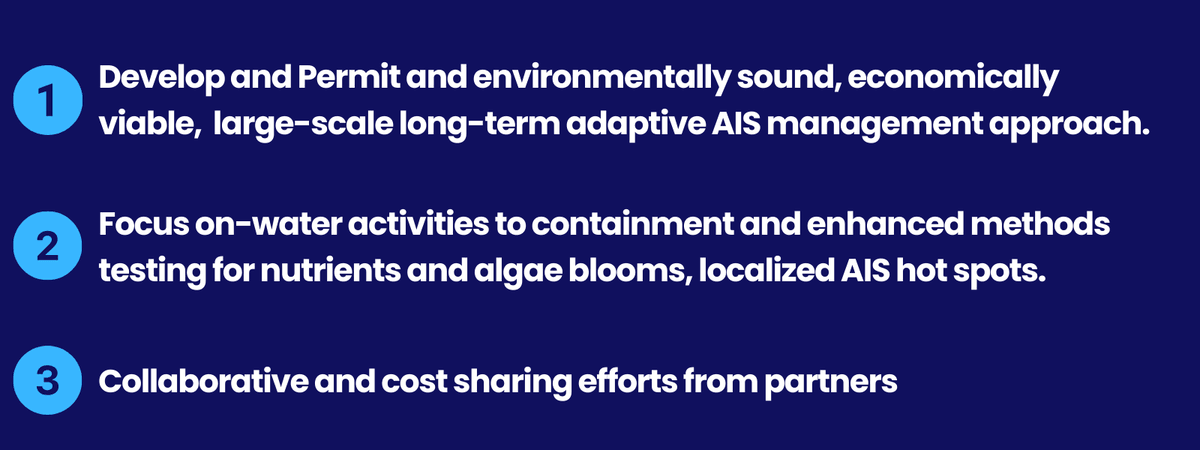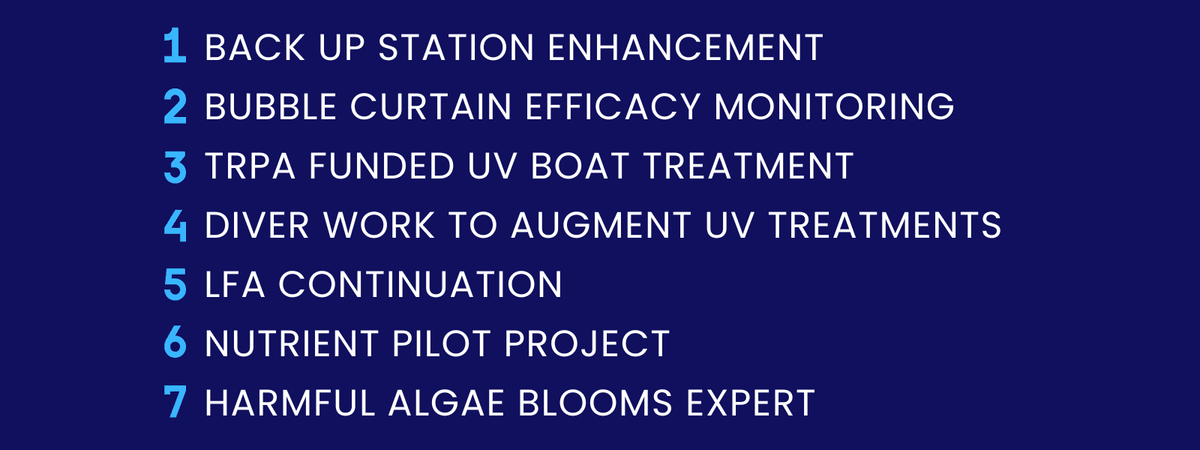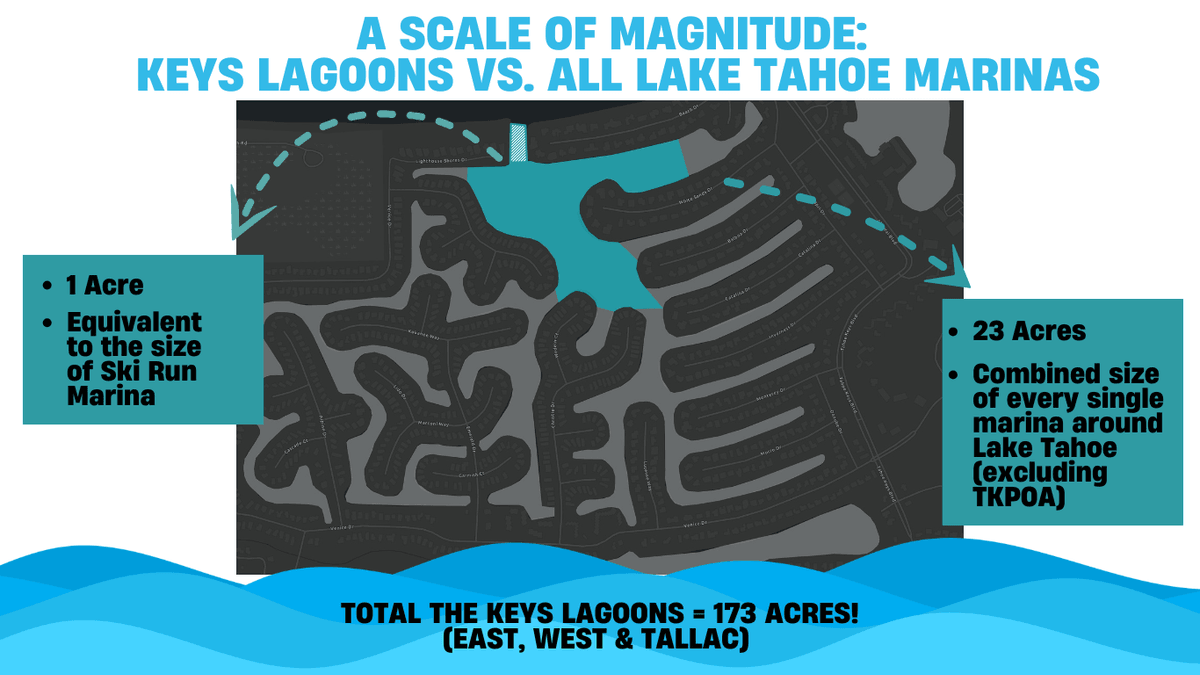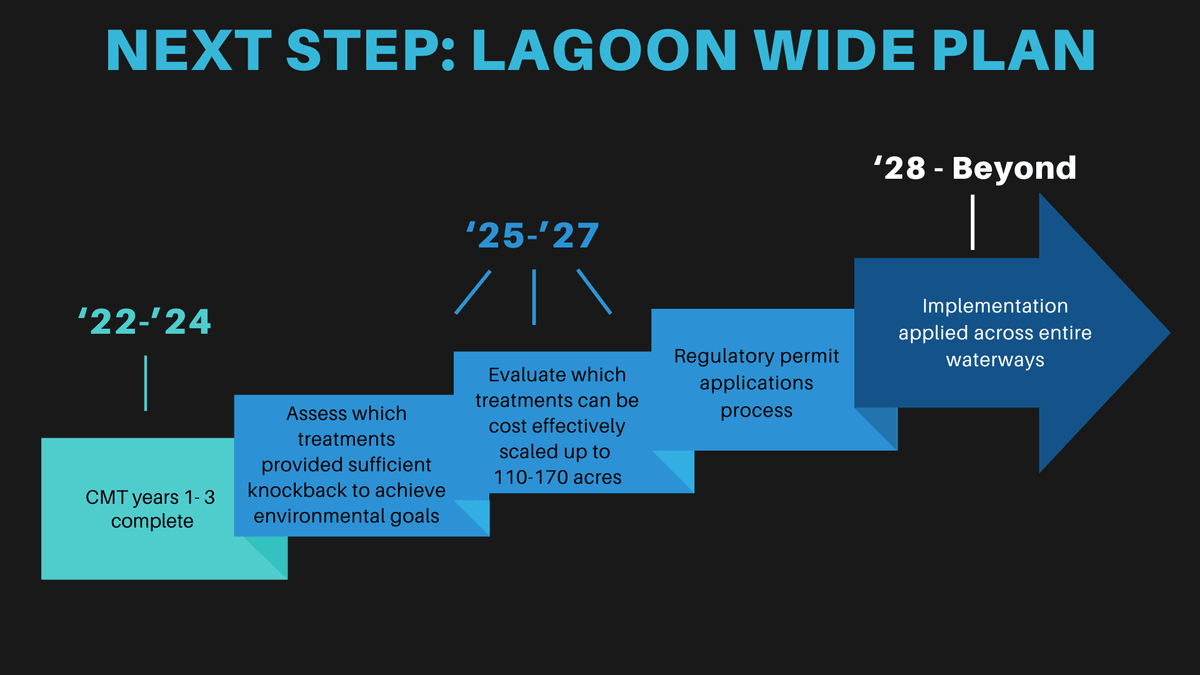
- Home
- Large Scale Weed Removal
- Harvesting Operations
- Lagoon Water Quality
- Waterways Program
- Take Action
- Meet the Team
- Permits & Reports

Weed Removal Project
The Weed Removal Project is the long-term plan to implement ecologically sound, economically viable, permittable solution to the aquatic invasive weeds.
Special Assessment Vote to Fund: The Next Four Years

The Regional Tahoe Planning Agency and the League to Save Lake Tahoe support TKPOA's efforts.

The three main goals of the Weed Removal Project is to implement an ecologically sound, economically viable, and permittable solution to the aquatic invasive weeds issue.
Tahoe Keys Waterways:
Objectives of the Next Four Years

Permit Application Process
12025
Scientific Review / Symposium
22026
- Project Development
- Permit Application Submission
32027 - 2028
Environmental Impact Statement and Report (EIR/EIS)
42029
- Board Hearings for Permitting Approval
- Implementation
Project Expenses: Next Four Years
The Special Assessment is to fund actions required for approach development and the permitting process along with on-water activities for enhanced methods testing. The budget for the 2025 through 2028 Waterways Special Assessment is a total of $3,000,000 with a $350,000 contingency being funded through carryover money from the CMT project. Per the 1991 Stipulated judgement, cost sharing from the three East Channel entities portion is estimated at $480,000. The remaining funds needed to be raised are $2,520,000 or $630,000 per year.
The Special Assessment for the remaining $2,520,000 will translate to 16 equal payments over 4 years payable quarterly beginning in May 2025. Each property owner will have a quarterly due which is outlined below:
Single Family Residence - dues will be $115 per quarter/$460 per year.
Townhomes, Landlocked, and Lake Tallac Residence - will pay a 75% portion at $86 per quarter/$344 per year

On-Water Activities: Next Four Years




Keep Up with the Project!
Sign Up to Receive Weekly Emails!
We'll get in touch with you soon.







